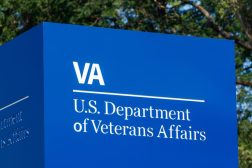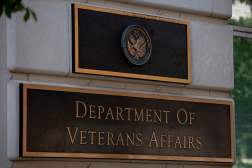VA takes $50M ‘pause’ on health IT project to question its future

Lawmakers are worried the Department of Veterans Affairs’ requested spending cutback for health IT modernization could be a sign the agency is struggling to meet the goal of interoperability with the Defense Department’s electronic health records system.
VA requested $50 million less in fiscal year 2017 funding than it did this year for the ongoing modernization of the Veterans Health Integrated System Technology Architecture — known as VistA Evolution. The cut led members of the House Appropriations Committee’s Subcommittee on Military Construction, Veterans Affairs and Related Agencies to question if the agency is again taking a step back on its health IT system modernization and interoperability goals.
“VistA has now taken a pause,” Rep. Sanford Bishop, D-Ga., said.
While it’s true VistA Evolution’s funding would be reduced next year under the request, VA CIO LaVerne Council said it will not slow her goal of being interoperable with DOD by the deadline set in the 2014 National Defense Authorization Act — the end of calendar year 2016.
“It does not affect interoperability,” Council testified Wednesday, stating the department is continuing development around its data standards interoperability with the current joint legacy viewer EHR platform and transitioning to the more modern Enterprise Health Management Program later on.
By the end of March, she told the subcommittee, the VA’s data standards in its joint legacy viewer will be fully mapped to those of the DOD and its new Defense Healthcare Management System Modernization, which it contracted to Leidos Inc. and a partnering team last year for $4.3 billion. The JLV, which Council said currently offers EHR interoperability to 35,000 VA health care providers, and DOD’s DHMSM will have the basic level of integration the two agencies have been striving toward for years.
The VA is also developing the Enterprise Health Management Program to replace JLV and offer end-to-end interoperability with DOD’s DHMSM. Council said she anticipates that to happen by August — “our data will be fully interoperable.”
Then what’s the reduction in VistA funding — that pause — all about?
Council and Undersecretary for Health David Shulkin, who weren’t in their roles when VA embarked on the VistA Evolution project, said they’re being “good stewards” of the money appropriated before their time and ensuring that the VistA project still makes sense as the best EHR platform for the future of the VA, questioning if it might be time to pivot away from it.
The two performed a business case study around the framework set forth by VistA and came away with new considerations, like the expansion of women’s care within the VA, the movement of veterans’ care from VA hospitals to other providers in the community, increased security needs and increased mobility in the medical industry today.
[Read more: Lawmakers call on president to demand VA-DOD health interoperability.]
“When we looked at the issue, we felt that we needed to take a step back,” while focusing on interoperability, Council said.
Some of the lawmakers who’ve seen the full arc of the DOD-VA interoperability saga weren’t pleased to hear about that shuffling.
“We’ve been at this 10 years. We’ve given you billions of dollars,” said full committee Chairman Rep. Hal Rogers, R-Ky. “And I’m hearing muckety-muck here.”
Rogers told an anecdote from “seven or eight years ago, at least” of a veteran who lost an eye in combat and needed care for his other eye upon his return stateside. However when he visited the VA hospital in Lexington, Kentucky, the staff turned him away because it didn’t have access to his records held by the DOD. That veteran went totally blind, Rogers said.
VA Secretary Bob McDonald said with certainty that wouldn’t happen today, and his staff backed him.
Shulkin, a doctor who now practices with the VA in addition to his undersecretary role, said from experience that today “we can absolutely get records from the DOD using the joint [legacy] viewer.”
Shulkin and Council maintained that the path to interoperability wouldn’t be affected by reconsidering VistA Evolution.
“We’re not slowing down. We’re using VistA. It gets better every day,” Shulkin said.
He added, “We have the responsibility — technology has changed so much — to lay out a plan to make sure that the system that we’re using now is going to meet the needs of veterans for the future.”
Council said they’re making sure this project, which was handled in an ad-hoc manner prior, will have the best impact for veterans.
“The fact is we need to ensure that we have laid out the plan and strategy so everyone can understand exactly what we’re doing and why we’re doing it. When we came into these roles, we didn’t have that strategy laid out,” she said. “It’s not going to stop anything that’s currently being done.”
Contact the reporter on this story via email at Billy.Mitchell@FedScoop.com or follow him on Twitter @BillyMitchell89. Subscribe to the Daily Scoop to get all the federal IT news you need in your inbox every morning at fdscp.com/sign-me-on.






